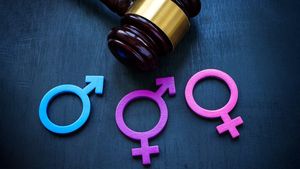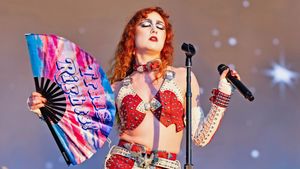Comics are getting more diverse, and that's great! It’s amazing that we can read stories like the Hugo-winning Miss Marvel (about a superpowered, teenaged, Pakistani-Muslim girl) or Saga (the space opera about parenthood chock-full of strong woman, queer characters, and barely a stereotype in sight). Stories about people who aren’t beautiful, ripped, white, male-fantasy-driven demi-gods aren’t shoved off into the indie comic aisle anymore (though you should still definitely be going down that aisle now and then), and they’re popping up more and more often on the rosters of heavyweight players like Marvel, DC, and Image.
And that’s AWESOME.
Don’t get me wrong here. The representation of these stories, both on the pages and on the screens, is one of the things I have watched grow in my life with joy in my heart and (let's be real) tears in my eyes. There is nothing like seeing your face reflected in the pop culture mirror that shows us reality (except maybe seeing a kid experience that same thing).
But real, actual queer people and people of color are still DRASTICALLY underrepresented behind the scenes in the comic and entertainment industries. According to some number-crunching done by Bleeding Cool, the number of creators at the three biggest publishers of comics—DC, Marvel, and Image—are overwhelmingly male and overwhelmingly white. And while being openly queer is a little less obvious to pin down (unless a creator is open about it), we’re guessing the numbers for the amount of LGBT comic creators at those three big companies probably aren't looking great either.
That’s how you get the fact that Marvel’s current editor-in-chief is a guy who pretended to be a Japanese man for years, using the identity to work around rules about submitting while being an editor and letting Marvel promote his works success as a rarity for a "non-English speaking native." That’s how you get Marvel banning queer content from their fanfic generator. (Marvel, do you know how fanfic works??!?) The list goes on and on, and Marvel’s not the only one guilty. When you mix in more woman, queer people, and people of color, you get a more authentic, better-written look into this world. It is part of why Kamala Khan's Ms. Marvel (created in part by G. Willow Wilson, a Muslim woman) has been such a success.
But a common complaint among those who make executive decisions is that they don’t know where to find writers and artist with these experiences. Though a weak excuse to start with, award-winning author, illustrator, teacher, and editor MariNaomi is here to tackle the problem head-on like a hero, annihilating all excuses and providing an amazing resource to the art community.
Enter the Queer Cartoonists database! And its sister site, the Cartoonists of Color database!
A creator of color herself, MariNaomi founded these two sites while writing an article highlighting comic creators of color. As she did her research, she realized she had far too many wonderful artists for just one article, and the project morphed into the labor of love it is today, becoming the Cartoonists of Color database. The Queer Cartoonist database followed soon after, with both websites filling up rapidly with a diverse array of artists (some curated by MariNaomi, some self-submitted through the website). Naomi is careful to be sure not to out anyone, letting queer artists edit their own information to be sure they are comfortable with what is presented publicly.
The tool has become irreplaceable for not just readers, but researchers, librarians, editors, and more. MariNaomi says multiple artists that use the databases have reported getting paid gigs from it. That means not only are these sites helping with representation, they are helping queer artists keep a roof over their heads.
"I’ve heard from creators who’ve gotten paying gigs, artists who got picked up by galleries, lots of teachers and librarians, convention folk who use the lists to find panelists, bookstore owners who use them to find comics to stock in their stores," she told PRIDE. "The work of maintaining these websites is pretty boring—I’d much rather be drawing comics—so it’s really this feedback that keeps me going.”
As you can tell, the project is a labor of love. MariNaomi keeps it up through her own personal funds, and she and her husband spend several hours a week updating the database. When it started, it sucked up weeks of her life, coming together rapidly as projects that feel a vacuum often do.
If you’d like to help MariNaomi keep the database going, check out her Patreon or follow her on Twitter here!



























































































































